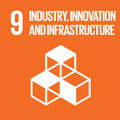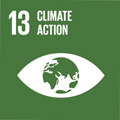- Docente: Andreina Milan
- Credits: 6
- SSD: ICAR/14
- Language: Italian
- Teaching Mode: Traditional lectures
- Campus: Ravenna
- Corso: Second cycle degree programme (LM) in Engineering of Building Processes and Systems (cod. 8829)
Learning outcomes
The course aims to provide students with the specialized knowledge concerning the design intervention process on existing artifacts of historical value in accordance with a methodological approach oriented to interventions of "light" aimed at the re-use, even temporarily, of the artifact.
At the end of the course students will be able to
identify the constraints of protection to which the workpiece is subject and the elements on which they act
identify some possible uses of the product, able to allow a use which enhances the characteristics but which generate the least interference with the valuable elements of the historical well
define the functional and performance program of one of these possible uses and, on this basis,
formulating the final draft of an intervention that allows a public use, even temporarily, of the building, without prejudice to its conservation in its entirety and without interfering permanently with the elements subject to preservation orders.
Course contents
The course is part of the Laboratorio Integrato and will focus on the definition of a project-based methodology for the study of development on existing building following an approach that defines design brief and its “formalization”.
“Building on what is built” is an hot topic in architectural design as it re-defines and/or put to new uses the existing building fabric to fulfil new societal needs.
More specifically, the course will consider this issue from two angles: on the one hand the temporary approach as a technique of light intervention that is not very invasive yet capable of rendering the existing building fabric fit to meet the new societal needs and on the other the relation between what is new and what is already there as a key principle for building.
The course consists in a mixture of theoretical lectures and practical exercises to give students the necessary tools to analyse and interpret the features of existing building and then to define programmes of renovation and restyling according to new needs and safety norms.
The lectures will be based on a series of case studies to identify the key elements needed for the development of a common methodology and project. The case studies will be selected depending on the type of intervention, which will require a critical understanding and appreciation of what is already there and of the elements and services required to fulfil new needs.
A key part of the course consists in an exercise to put into practice the theoretical knowledge acquired. This year the exercise will consist in the design of a structure or volumes of small dimensions, including temporary ones, to ensure that school classrooms are Covid 19-proof. More specifically, a number of existing projects of school buildingsReadings/Bibliography
- R. Moneo, La solitudine degli edifici. Questioni intorno all'architettura, Vol. I, Allemandi, Torino 1999
- R. Moneo, La solitudine degli edifici. Sugli architetti e il loro lavoro, Vol. II, Allemandi, Torino, 2004
- C. Zucchi, N. Bassoli (a cura di), Innesti: il nuovo come metamorfosicatalogo Padiglione Italia, 14. Mostra Internazionale di Architettura, Marsilio, Venezia, 2014
- Casabella, Scuole del secondo Novecento, n. 750 - 751, 2007
- L.A. Pezzetti, Architetture per la scuola. Impianto, forma, idea, Clean, Napoli 2012.
- M. Ferrari, Di ogni ordine e grado. L’architettura della scuola, Rubbettino, Cosenza 2016
- Fondazione Giovanni Agnelli [https://www.libreriauniversitaria.it/libri-autore_fondazione+giovanni+agnelli-agnelli_giovanni_fondazione.htm] (a cura di), Rapporto sull'edilizia scolastica, Torino, Laterza, 2019
- www.serpentinegalleries.org
Teaching methods
Throughout its course, the course will alternate lectures, seminars with external guests and practical activities in the classroom assigned for the exercise play.
The lectures will focus on a possible policy-design methodology by defining analytical and identify issues and specific design elements of contemporary interventions patterns in historical context, conducted through the critical reading of exemplary references.
Assessment methods
The assessment will be carried out during the period of the course, through periodic checks in the form of synthetic related presentations by graphic schemes of work, related to the topics covered in the lessons and progress of the exercise given.
It is also provided at least two collective testing in the classroom, during which will be assessed state of relative exercise assigned advancement.
The final exam will consist of an individual interview aimed to verify the knowledge and understanding of the texts of the course literature and to evaluate the papers produced during exercise.
The final judgment will be based on knowledge of the subjects covered, the level of critical understanding of the bibliography, the reported results in the intermediate evaluation on the ability to expose correctly, concise and effective work done for exercise.
Teaching tools
Lectures with slides, audio and / or video reproductions.
Seminars with the participation of external guests.
Office hours
See the website of Andreina Milan
SDGs




This teaching activity contributes to the achievement of the Sustainable Development Goals of the UN 2030 Agenda.
